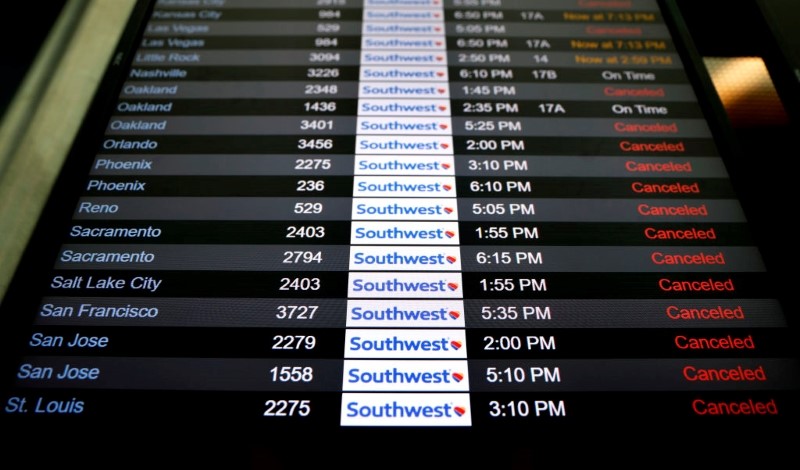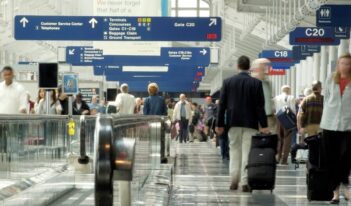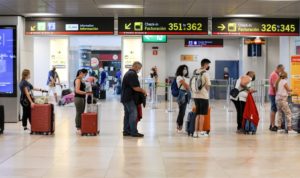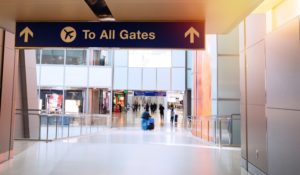
A Penn Program on Regulation panel considers the merits of reforming U.S. aviation regulation.
Southwest Airlines canceled more than 16,700 flights in late December 2022 due to internal software failures, stranding millions of travelers across the country over the holiday season.
A few weeks later, in January 2023, the Federal Aviation Administration’s (FAA) Notice to Air Missions (NOTAM) system—which alerts airports and pilots to ongoing hazards—shut down. This shutdown lead to a nationwide halt of all air traffic for the first time since September 11, 2001.
These two meltdowns prompted a panel discussion sponsored by the Penn Program on Regulation (PPR) that asked: Is it time to re-regulate the airlines?
In remarks that opened the panel discussion, Paul Verkuil, former Chairman of the Administrative Conference of the United States, defined the three routes available when seeking regulatory change: more, less, or better existing regulation. Verkuil proposed that in responding to the recent debacles in the airline industry, the key is to look for better regulation.
Verkuil argued that two major problems lie at the heart of any agency’s effectiveness: the inability to fill vacant leadership positions and the struggle to implement new technology. Verkuil underscored that the January NOTAM meltdown in was caused by the failure of vintage digital hardware.
Panel member Mary McInnis Boies, counsel at Boies Schiller Flexner LLP and former General Counsel to the Civil Aeronautics Board (CAB), agreed with Verkuil that improving existing regulation was the best course of action.
Boies denoted three types of regulation that apply to the aviation sector and commercial aircraft: safety, economic, and consumer protection. She explained that safety regulations remain the province of the FAA and were never affected by the movement to deregulate the airline industry.
The government did unravel economic regulation, however, in the late 1970s. Economic regulation of the airlines had begun in 1938 with the establishment of the CAB, an independent agency that controlled airlines’ flight routes, ticket prices, mergers, and acquisitions. Boies noted that it was this type of regulation that was the target of deregulation in the Airline Deregulation Act of 1978. That law was designed to phase out the CAB, lift many economic restrictions, and transfer the CAB’s antitrust authority to the Department of Justice.
Consumer protection regulation—the third type of airline regulation—include rules governing passenger rights related to flight cancellations and delays, lost or damaged baggage, refunds, and tarmac delays. Boies noted that the 1978 Act transferred regulatory authority over consumer protection from the CAB to the U.S. Department of Transportation. Because this authority was transferred and not eliminated, Boies argued that the Transportation Department “does not need new legislation, it just needs a new point of view.”
The push for deregulation in the 1970s stemmed from the success of intra-state carriers—such as Southwest Airlines in Texas—which were not regulated by CAB but offered consumers lower prices than CAB-regulated, interstate carriers, Boies indicated. The stark comparison between the services of intrastate and interstate airlines, paired with Senate testimony of freight carriers flying small planes wingtip to wingtip to avoid CAB price regulation, fueled the deregulatory movement, she noted.
Another panel member, William J. McGee, a senior fellow at the American Economic Liberties Project, posed a question at the root of the discussion: What is the airline industry? He argued that “the airline industry is a utility”—and noted that “utilities are regulated.”
McGee argued that when airline CEOs come before Congress asking for taxpayer assistance, they portray their companies as intrinsic to American security, economy, and defense. If airlines cannot fail and must be supported by the taxpayers, McGee concluded that this qualifies them to be treated as utilities subject to government oversight.
Panel member Ganesh Sitaraman, a professor of law at Vanderbilt Law School, argued that airlines are a network industry, where greater consumer and provider value comes from widespread use and where capital costs are high. These characteristics work together to create a tendency towards consolidation. Sitaraman viewed access to these network industries—which he defined as “infrastructure for commerce”—as stitching the country together and facilitating economic activity and commerce.
In addition, Sitaraman highlighted the cost differential between providing service to rural and urban areas as creating the problem of cream skimming. Because of the cost differentials in these parts of the country, airlines have an incentive to abandon high-cost rural areas in pursuit of easy profits, which without regulation would have meant that only high-volume, low-cost urban areas received service.
Sitaraman concluded that, due to the infancy of the aviation industry in the 1930s, people were worried about the twin factors of cream skimming and consolidation leading to underinvestment in capital and continuous boom and bust cycles. These economic and equity concerns—paired with national security concerns about having a civilian reserve of pilots—paved the way for a public utility regulatory scheme applied to airlines, which lies between the nationalization and laissez faire approaches.
Looking at the 1978 Act, McGee contended that deregulation “has been nothing but a series of broken or unfulfilled promises” on the value of competition and avoiding consolidation in the airline industry. He argued that today’s unprecedented level of market share concentration leaves the consumer with the worst of laissez faire and the worst of government ownership: airlines’ losses are socialized by taxpayer bailouts, but their profits are privatized.
McGee pointed out that the “Big Four” commercial airlines—American, Delta, United, and Southwest—today control around 80 percent of the domestic market share when these airlines’ regional partners are included. McGee views this as evidence of an oligopoly. This unprecedented concentration, paired with a fourteen-year gap from 2007 to 2021 of new entrants in the United States, exemplified the broken promises of deregulation, according to McGee.
McGee underscored that with today’s unprecedented level of market share concentration, the consumer is receiving the worst of both worlds because the losses are socialized and the profits are privatized. With an emphasis by airline CEOs on stock buybacks and executive compensation, McGee argued that taxpayer assistance demands government intervention. He cited the NOTAM blackout and the Southwest fiasco as “symptoms and not problems” that should spark conversation on how this vital industry should be regulated.
McGee contended that today the real barriers to entry in the airline industry are financial factors such as common ownership—which encourages investors to invest in all existing major carriers instead of one new entrant—erect the barrier to entry, not government regulation. This stack of broken promises lead McGee to conclude that “re-regulation is inevitable.”
Panel member Clifford Winston, a senior fellow at the Brookings Institution, stressed the importance of the credible evidence produced by the economics profession in assessing the effects of airline deregulation. This evidence is based on “counterfactual” analyses that compare the effects of regulation of airline travelers, carriers, and safety with the effects of deregulation on airline travelers, carriers, and safety.
For example, Winston noted that the effect on fares of deregulated intra-state airline competition in California can be compared with the effect on fares of Civil Aeronautics Board (CAB) regulation of interstate airline competition. That comparison showed that deregulation reduced airline fares and clearly supported economic deregulation of the airline industry, according to Winston. After deregulation was enacted, a counterfactual analysis verified the benefits of that policy by comparing actual deregulated airline fares with regulated airline fares based on CAB’s methodology for setting regulated fares.
Winston argued that research by economists has made it clear that, to make a credible and defensible case for re-regulation, a counterfactual analysis must be applied to show that re-regulation would increase social welfare compared with maintaining deregulation.
Counterfactuals continue to show that more deregulation has—and that additional deregulation could—benefit travelers, Winston noted. He pointed to studies showing the success of the Open Skies policy, under which fares have fallen when U.S. airlines engage in deregulated competition with foreign airlines on international routes. Allowing foreign airlines to provide service on U.S. domestic routes also could benefit air travelers in a similar way that U.S. consumers benefited when foreign manufacturers of vehicles were allowed to manufacture and sell their vehicles in the United States, Winston observed. In addition, Winston advocated privatizing U.S. airports, which could break up airport monopolies, increase airline competition, and reduce airline fares.
Winston concluded that counterfactual analysis consistently shows repeated failures whenever government tries to impose economic regulation, evidence that cuts against efforts to re-regulate the airline industry.
In their discussion with each other and in response to audience questions, panel members delved further into the merits of re-regulation and further deregulation, explored different sets of counterfactuals, and assessed the vacuum of antitrust enforcement and lack of price competition in the airline industry. Proposed solutions varied, but a common thread appeared to be some recognition of a need for a degree of change.
A video recording of the discussion, which was moderated by Cary Coglianese, the director of PPR and professor of law at the University of Pennsylvania, can be viewed online at PPR’s YouTube channel.



